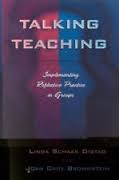This book explores the processes involved in developing assessment practice. It argues that the role of teacher assessment needs to be put firmly at the forefront of the educational agenda and that assessment by teachers needs to be developed in a widespread, high quality and sustainable fashion.
The authors, all members of the influential Assessment Reform Group, argue that the target-driven approach of external testing leads to problems, including 'teaching to the test' to the detriment of the wider curriculum, and motivational problems.
In this book, they tackle the differences between formative and summative assessment and ask the question: "What is quality teacher assessment?"
There is coverage of key professional learning dimensions including:
The purposes of assessment
The need for evidence to support innovation
The process and steps to develop new practice
Perceptions of what counts as quality assessment in schools
The authors draw on these various perspectives to explain how teachers and schools can build on existing practice, and develop new practices, and how the system should react to support them.
This book is essential reading for teachers, head teachers, local authority professionals, policy makers and academics.
Table of contents
Contents
Acknowledgements
Developing teacher assessment: an introduction
Part I Lighting the fuse
1 Assessment to support learning
2 What is quality teacher assessment?
3 What is happening in the UK?
Part II Spreading the word, widening the practice
4 What is innovative about teacher assessment?
5 Moving beyond the classroom
6 Professional learning to support teacher assessment
7 Teachers as self-agents of change
Part III Keeping it going
8 Making a difference: evaluating the impact of innovations in assessment
9 Embedding and sustaining developments in teacher assessment
Appendix 1 Projects examined and members of the core group and advisory committee of the Nuffield Foundation-funded Analysis and Review of Innovations in Assessment (ARIA) Study, 2006/8
Appendix 2 A professional development template
References
Index
 This work is the product of a three-year grant-supported induction year program. College faculty from an associated group of colleges joined staff developers from a growing suburban district in creating an entire year's curriculum for beginning teachers.
This work is the product of a three-year grant-supported induction year program. College faculty from an associated group of colleges joined staff developers from a growing suburban district in creating an entire year's curriculum for beginning teachers.






